|
“The battle was the last stand of the Lakota Sioux and Cheyenne as well. General Sheridan now had the leverage he needed
to put more troops in the field. Lakota hunting grounds were soon infested with soldiers and forts; there was no longer a
refuge for the Lakota. Most surrendered within one year after the fight.”
The National Park Service - Little Bighorn Battlefield National Monument
The battle of Little Bighorn
would be the last victory for the American Plains Indian. If the U.S had accomplished what they hoped, to return the
Indians back to reservations, it would have just been another Indian uprising put to rest. All would have been the same,
except the Indians and their way of life would have been destroyed sooner. Smaller battles were fought later, ending with
the Battle of Wounded Knee in 1890. After that, the Indians were forced on to the reservations. The United States
crushed the spirit of the American Indian. The Indians were no longer independent. They relied on the government for food
and shelter, most of which was low quality. Indian Life for many on the reservations today has not changed. They are some
of the poorest areas in the U.S. today.
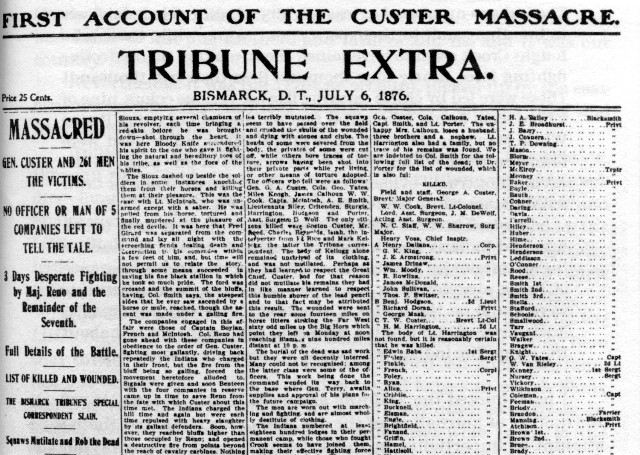
click here to read additional newspaper accounts about the battle.
July 6,1876 Tribune newspaper reporting the "Massacre" of Custer and his men.
"We preferred our own way of living. We were no expense to the government. All we wanted was peace and to be left alone. Soldiers
were sent out in the winter who destroyed our villages. They say we massacred him, but he would have done the same thing to
us had we not defended ourselves and fought to the last"
Crazy Horse
|
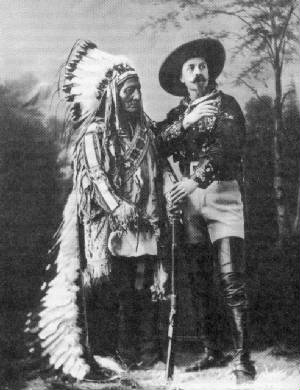
Sitting Bull appeared with Buffalo Bill
Cody.
|
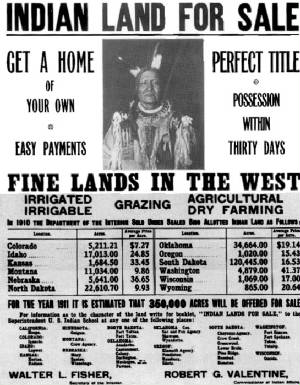
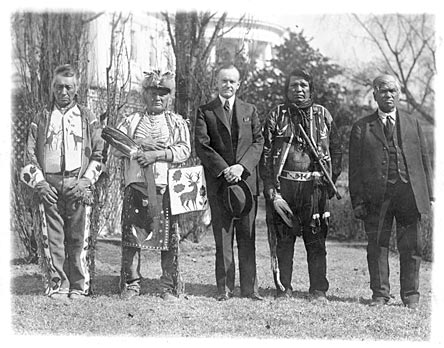
|
| President Calvin Coolidge with new Indian citizens |
Many Indians had become citizens through
the Dawes Act of 1887, but it was not until the Indian Citizen Act of 1924 that allowed all Native
Americans born in the United States become citizens.
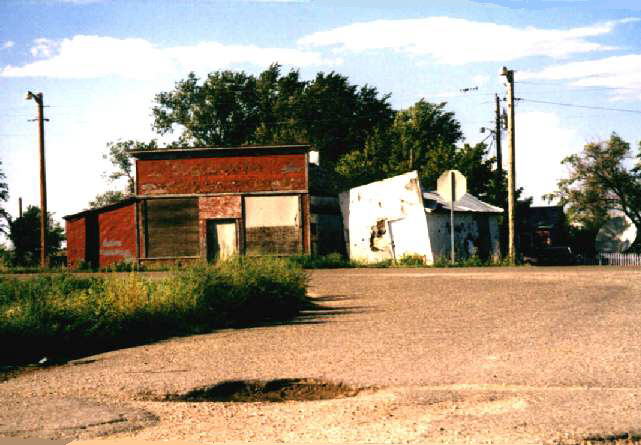
|
| Indian Reservation life is still very poor today |
Current Lakota Reservation conditions (above)
On March 22, 1946, the battlefield was officially named Custer National Battlefield. It was not
untill 45 years later on December 10, 1991 that name was finally changed to Little Bighorn National Battlefield. Before
the name was changed, the Battlefield presented a one - sided view of events without representing the
"Indian side" of the story.
|
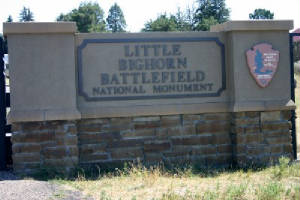
Indians today are still suffering from the actions of our government during the 1800's. Some Indian tribes
have been allowed to open casinos(right), but most most Indians remain poor.
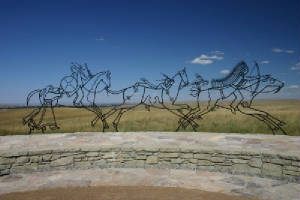
|
| Sculpture by Colleen Cutschall, an Oglala-Sicangu Lakota artist/professor |

This sculpture (left) was part of the Indian's efforts to gain equal recognition for their people.
|

